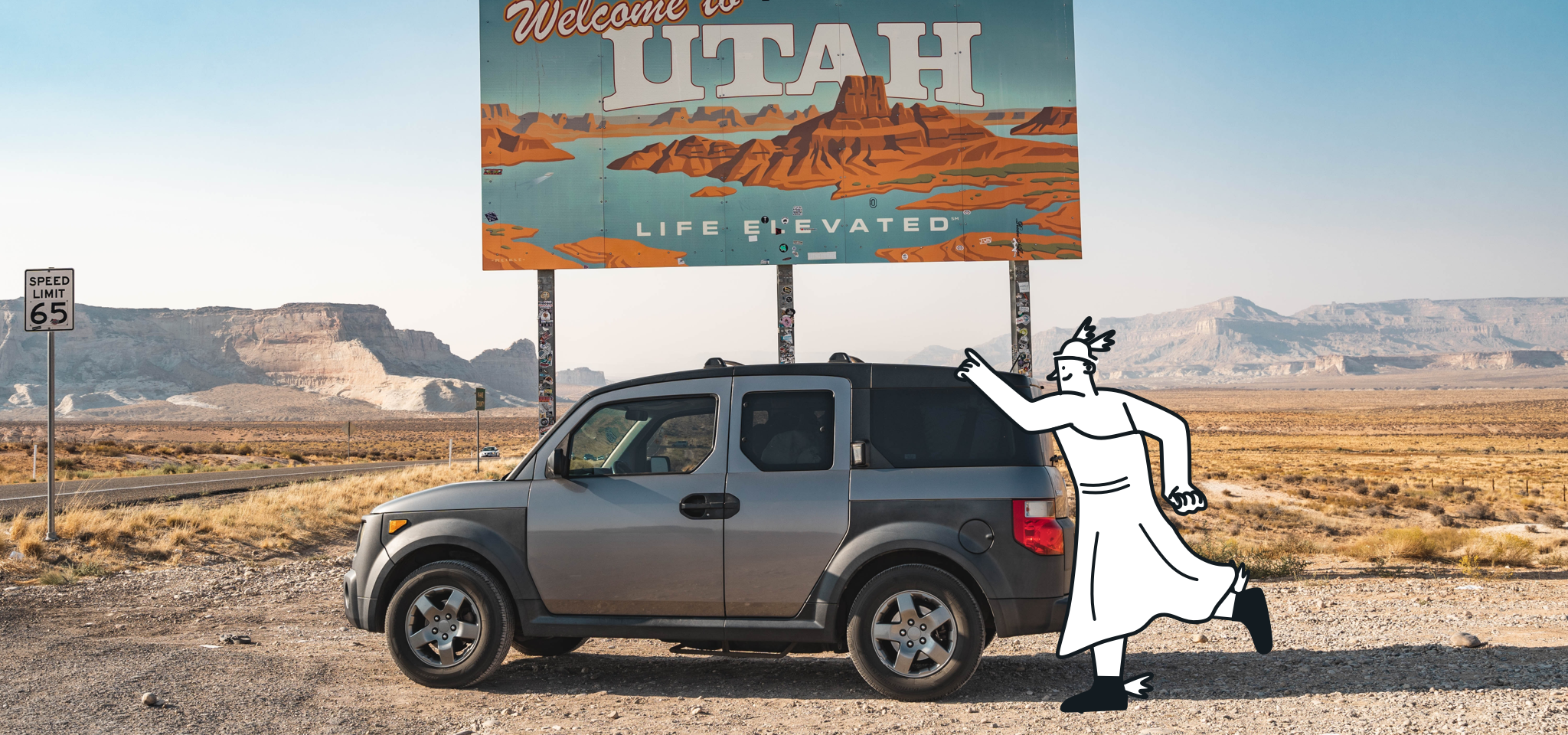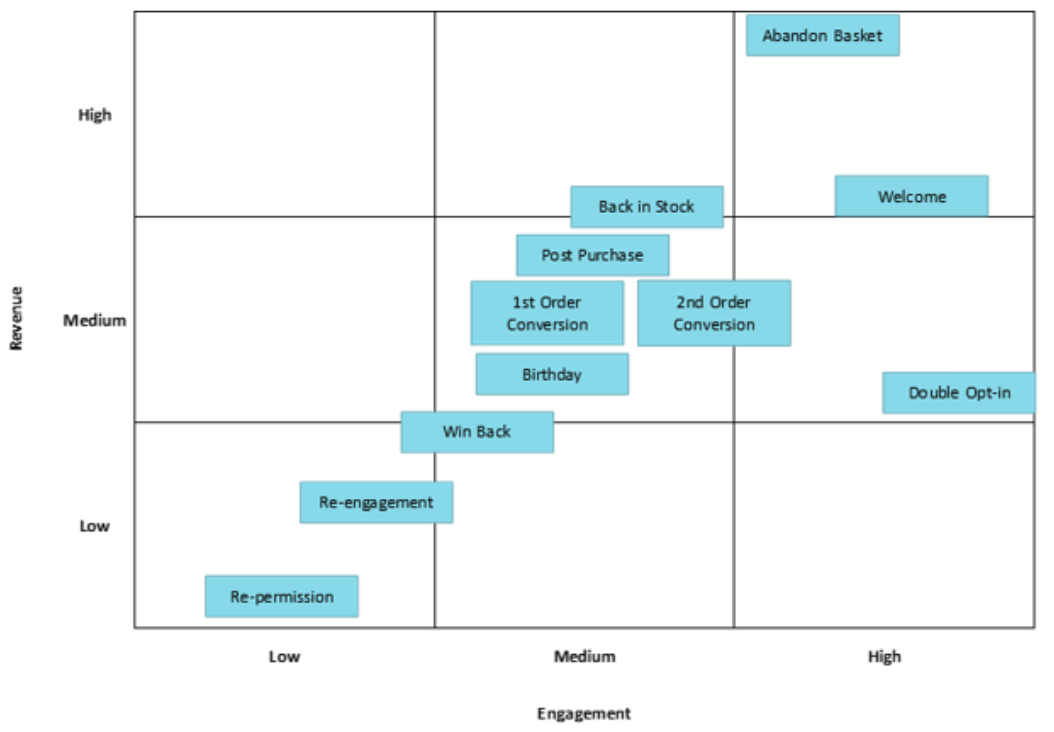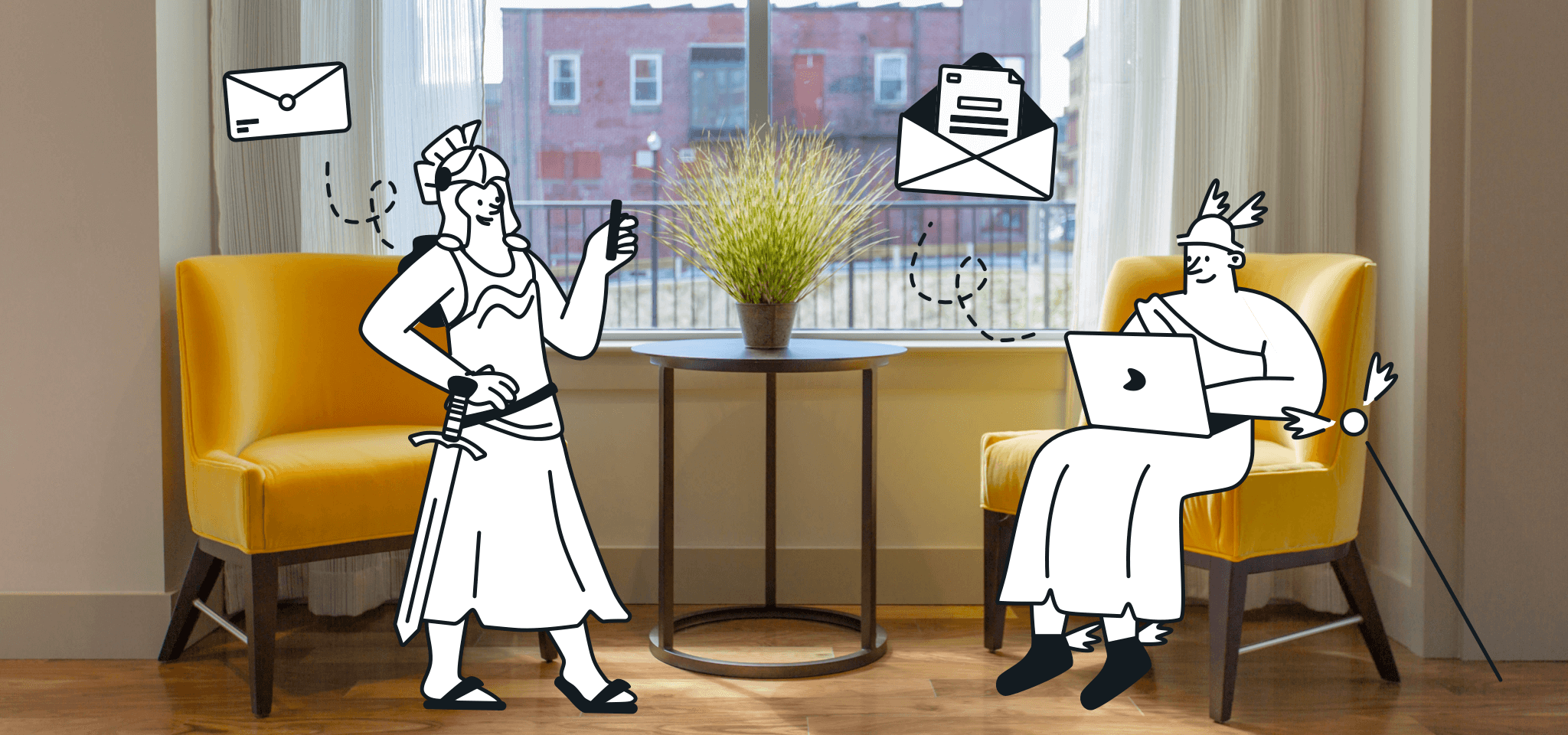Marketing
Top lifecycle marketing strategies to optimize your customer journey
At last year’s Email Camp, we were lucky enough to have three customer lifecycle experts come by to discuss customer journeys. We’ll dig through all the best data, stories, and advice from the panel.

PUBLISHED ON
Crafting an effective customer journey is no easy feat. It’s a highly data driven craft with many moving parts that needs to be carefully mapped out and executed.
So, what are the most effective strategies for successfully walking customers down their different paths? At Email Camp 2022, experts Chelsea Mellonas, Sr. Manager of Lifecycle Marketing at Sinch Email; Gavin Sherry Head of Deliverability at Bloomreach; and Greg Zakowicz, Sr. Ecommerce Expert at Omnisend, shared their standout techniques to attract, convert, and retain their audiences. Curious to learn more? We’ve summarized them in this post for you. Let’s get stuck in.
Table of content
1. Understand the many branching customer journeys
2. Automate your lifecycle marketing along the customer journey
3. Know the importance of welcoming customers onboard
4. Leverage the power of SMS marketing
What is a customer journey?
A customer journey is a story of how a customer interacts with your brand. It includes every interaction they make along the way, with many possible branching directions. Customer journeys start the very first time they browse your website, to deciding to sign up for a newsletter, opening an email, and making a purchase.
But the journey doesn’t end with a purchase. Customer journey marketing is often called lifecycle marketing because it tracks the journey for as long as they remain customers. In fact, a common metric of success in lifecycle marketing is the customer lifetime value (LTV), which is the total revenue a customer spends in a lifetime.
Understanding how your customers interact with your brand requires careful research and planning to develop customer journey maps. In other words, customer journey mapping is a form of plotting out your customer’s experience with the typical purchasing process. Want to get started? Download our free template to start mapping your customer journey.
The customer journey is all of the experiences your customers have with your brand, from the first time they learn about your product or services to the duration of their relationship with your business.
How does marketing support the customer journey?
Well, that’s a great question. Too often, marketing campaigns and strategies are focused on converting and attracting new users.
Lifecycle marketing looks to change that and focus on attracting, converting, and retaining customers. Lifecycle marketers focus on guiding the customer through all the different stages in their relationship with a brand: interest, research, purchase, and post-purchase. To do that, they weave together the experience with well-crafted workflow scenarios, like a welcome series or cart abandonment reminder, to address customers with the right message at the right time.
The end result is something like a real story, with many winding roads all hopefully leading towards a destination you prescribe. But like any good piece of literature, it’s a work in progress – it requires research, iteration, and careful testing before being released to the world.
Top strategies to optimize the customer journey
At a glance, customer journeys can seem like a large and somewhat convoluted subject. There’s no limit to the combination of intersecting paths you can send a customer down and where they’ll end up.
Luckily, we have some fresh data to paint a picture of the state of lifecycle marketing. Let’s explore some of the practical and proven strategies our panellists shared to demystify this growing area of marketing.
1. Understand the many branching customer journeys
Customer journeys are like trees – they have many branches going in different directions. As marketers (or arborists), it’s our job to make data-informed decisions about which journey we take our customers on and what the destination is.
We can throw out the notion that moving our customers towards a sale will happen in a straight line. In fact, customer journeys probably look much more like a mess of squiggle lines.

Greg Zakowicz tweeted out this parody of a customer journey.
Lucky for us, we don’t have to individually move customers through their journey. Effective lifecycle marketing will have customers segment themselves automatically through their actions and behavior. For example, subscribers making their first purchase can move from a Leads segment to a Qualified segment that can be fed an entirely different email series. The content they receive can now focus on retaining them as customers.
“It’s really important to say that, in email marketing, a click is as valuable as browsing data. If it’s just a one-email initiative to say ‘welcome’, you’ve missed some opportunities to get to know your new customer.”
Gavin Sherry, Head of Deliverability at Bloomreach
Not sure where to begin? A great idea for those that feel a little lost is to look at your favorite brands. Companies like Apple, Levi, and Harley-Davidson have strong welcome series that can work as a source of inspiration. Or, make note of what competitors are doing and adapt some of these ideas to your audience.
2. Automate your lifecycle marketing along the customer journey
Automation is picking up speed at a dizzying rate. According to Omnisend, automated emails rose 73% in 2022 during the “Cyber 10” – the biggest shopping events of the year. Automation was also responsible for 30.4% of all orders (up 2%), while only accounting for 1.8% of total email campaigns sent. So, there’s some untapped potential in automation to say the least.

Omnisend’s report shows a drastic conversion rate vs percentage of sends.
But, like Greg pointed out during Email Camp, not all automation is created equal. In fact, 88% of automated orders come from a welcome series, browse/product abandonment, and cart abandonment.
As Greg explained, all these automated paths all have one thing in common – intent. If your customer is browsing your website, added something to their cart, or subscribed to your email list, their intent is to know more about your products or make a purchase. Automation supports this customer behavior and, when done well, encourages them to move further down the sales funnel. So, these are great workflows to start with or to optimize.
“If lifecycle marketing is the lock, then automation is the key. It allows markers to meet their audience wherever they are without the heavy lifting, giving them more time to delve deeper into the data.”
Chelsea Mellonas, Director, Lifecycle Marketing at Sinch Email
Automation begins to falter when applied to areas of low intent, such as cross-sell, browse abandonment, and birthdays. This is because the customer has not signaled that they are looking to make a purchase. Instead of being useful, automation could even become damaging to your deliverability.
To mitigate the risk of “en masse” automated messages hurting your deliverability, we recommend undertaking low volume A/B testing to see if your new series is a hit with your subscribers.
3. Know the importance of welcoming customers onboard
Welcome. Bienvenido. Salut. Willkommen.
It’s customary in most cultures to make people feel welcome before getting down to business. Yet somehow an email welcome series is often missed by companies, who instead rush customers toward a sale. Yes, we all want conversions, but by neglecting their welcome series, brands are missing the mark. Customer onboarding series have a higher conversion rate, but they also provide a controlled and personalized experience for new subscribers.

Welcome series generates both high revenue and engagement.
The goal for marketers is to make the customer’s first impression a positive one. To achieve that, Chelsea, Gavin, and Greg recommend holding off on any marketing emails until your customers are introduced properly.
“It is important for an organization to earn the right to market to its customers. The first way to do that is to properly onboard and welcome customers to your product or service. You need to start by building the loyalty and the brand affinity, putting the needs of the customer first before asking them to upgrade or make a further purchase.”
Chelsea Mellonas, Director, Lifecycle Marketing at Sinch Email
Lifecycle marketing is very much data-centered, so even when your welcome series is over, you should continue collecting data and profiling the customer even further. Remember, you should never stop learning about your customer and seeking opportunities to improve their experience. For example, a post-purchase series could provide recipes, expert advice, or targeted messages based on the customer’s purchase, offering value that is tailored to the stage of their journey with your brand.
Once your customer has completed the welcome journey, you can begin integrating sales emails into the mix. But don’t force it – if it makes sense to sell something, do it. But do it well. The key to finding the right time to send a sales email is to look at engagement, or lack thereof. Like Chelsea pointed out during our Email Camp panel, you have to earn the right to sell by providing a good balance of value – otherwise you’ll lose your audience.
“A welcome series can generate some serious revenue – 36.4% of all email orders are generated by automation, only second to abandon cart, and that's a huge number. So why are we not prioritizing the design of the welcome series?”
Gavin Sherry, Head of Deliverability at Bloomreach
4. Leverage the power of SMS marketing
There’s a reason omnichannel marketing made this year’s top email marketing trends – it’s rocking the customer lifecycle marketing world. As Chelsea stated, there’s nothing new about omnichannel marketing, but companies are only just understanding how to use it now.
Like email, SMS is a key element in the omnichannel mix and data points to an increase in SMS marketing usage year-over-year.

SMS marketing continues to grow year over year.
Comparing the data from eight years ago to now, Greg highlighted how much adoption has increased over time. While some people discounted SMS due to generational differences, Greg notes that nowadays SMS has a strong presence across different demographics – even his baby boomer mother subscribes to SMS marketing.
“I said it last year and I'll double down this year – if you're not doing SMS by this time next year, you're going to be behind your competitors.”
Greg Zakowicz, Sr. Ecommerce Expert at Omnisend
But while brands are waking up to the benefits of relevant and timely SMS messages, there’s still a discrepancy between “patch and blast SMS” and automated SMS journeys. Everyone’s been blasted with texts from companies wanting to sell them something, showing even SMS is not immune to spam. So, with the knowledge that spammers are targeting phones, you need to tread carefully when entering this medium.
Start by asking for mobile numbers in pop-ups and signup forms, even if you’re not ready to launch. From there, you can experiment with common transactional scenarios, like order confirmations and shipping updates, to get a feel for SMS. As Greg stated, your SMS strategy doesn’t need fully set up and running from the get-go. Instead, you can dabble into it, build it up, and give yourself some time to figure out if it's going to be worthwhile for your marketing mix.
In conclusion
Like all marketers, our expert panel from Email Camp had a few different approaches to crafting a customer journey. However, one thing they all agreed on is the most important source of truth is always your customer.
Instead of having to craft a perfect one-size-fits-all approach, let your customers move through your roadmap based on their behavior. Find opportunities to listen to them, look at their engagement, and continue to test and iterate until you find what works.
Here’s our main takeaways from the panel:
Automation is on the rise: The data points to higher levels of conversions with automated email journeys.
Don’t miss SMS: With omnichannel stats undisputed, we’re warned to get onboard or get left behind.
Roll out the welcome mat: Customers prefer a warm welcome email series before being sold to.
Tangled plot lines: Throw away the idea of perfect ratios and formulas and embrace the chaos of a customer’s journey.
Watch the full session of “The ultimate road trip: Your roadmap to optimizing the customer journey.”
This panel was one of many memorable speakers from Mailjet’s annual virtual email event, Email Camp. You can watch all the sessions from last year’s Road Trip Edition on our YouTube channel.
Want to make sure you don’t miss all the great sessions and content at Email Camp 2023? Register below!








